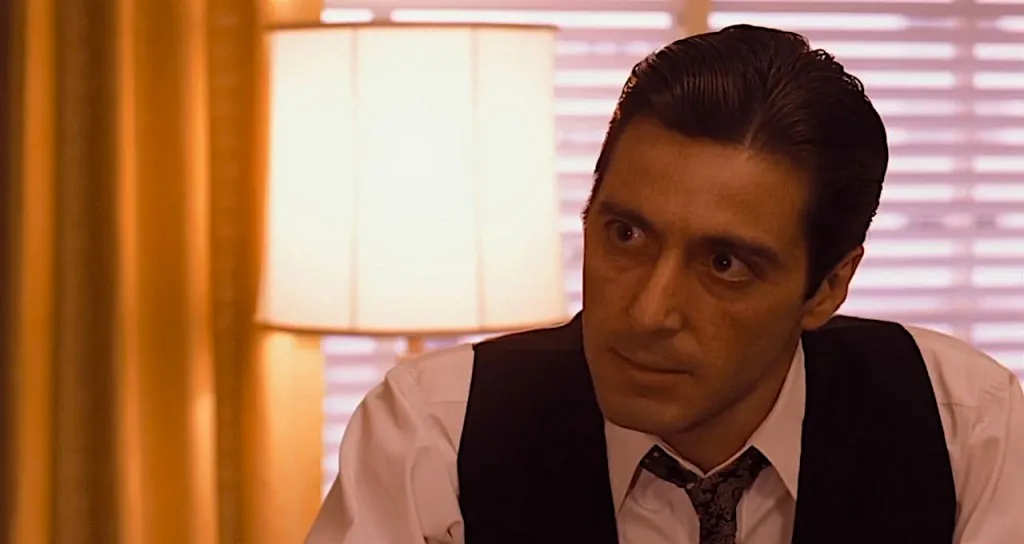Before Al Pacino became a household name, he was just a boy growing up in the Bronx, New York. Born on April 25, 1940, to Italian-American parents, Pacino was raised by his mother and grandparents after his parents’ divorce. It was in the rough neighborhoods of New York City that Pacino’s initial love for storytelling and performance was born.
As a child, he was known for putting on small performances for friends and family. In interviews, Pacino often recalls these humble beginnings. “I was always acting,” Pacino once said. “It was a way to express myself, a way to escape.”
Pacino’s natural inclination for dramatization eventually found a more formal outlet during his teenage years, setting the stage for his future.
Pacino’s first major step toward a serious acting career was his admission to the prestigious High School of Performing Arts in Manhattan. This institution, often referred to simply as “LaGuardia” today, has a long-standing reputation for producing some of the finest talents in the performing arts.
At the High School of Performing Arts, Pacino studied theater intensely. However, despite his enthusiasm, he struggled academically. As he later reflected, “School wasn’t my thing, but acting was everything to me.” Unfortunately, he eventually dropped out at the age of 17, feeling stifled by the conventional academic system.
Still, his time at the school exposed him to rigorous performance training and to peers who shared his passion, setting a solid foundation for what would come next.
After leaving high school, Pacino worked a variety of odd jobs while continuing to pursue his passion. It was during this time that he joined HB Studio, a renowned acting school in New York City founded by Herbert Berghof.
At HB Studio, Pacino trained under Charlie Laughton, a teacher and director who would become a key figure in his early development. Laughton recognized Pacino’s unique intensity and commitment to his craft. Pacino has frequently credited Laughton with giving him crucial encouragement during these difficult years.
In an interview, Pacino said, “Charlie gave me a place to express myself when no one else would. He believed in me before anyone else did.”
Through HB Studio, Pacino honed his craft, delving deeper into method acting techniques and developing the emotional depth that would later become his trademark.
Perhaps the most critical moment in Pacino’s acting education came when he was accepted into The Actor’s Studio, an elite membership organization for professional actors, theatre directors, and playwrights in New York City.
The Actor’s Studio is legendary for its association with method acting, a technique inspired by the teachings of Constantin Stanislavski and developed in America primarily by Lee Strasberg. Pacino studied directly under Strasberg, who became not just a mentor but also a father figure.
Pacino has always been effusive in his praise of Strasberg. “Lee Strasberg was a great influence on me. I learned so much about truth in acting from him,” Pacino stated. “He taught me to dig deep inside myself and bring that out on the stage or screen.”
This deep psychological approach to character development would become a hallmark of Pacino’s performances, evident in films like The Godfather and Dog Day Afternoon.
Despite his training, Pacino’s path was anything but easy. Throughout the 1960s, he struggled to find work and lived in poverty. He often slept on friends’ couches or even on the street. However, his perseverance and devotion to the craft never wavered.
He kept honing his skills through small theater roles and off-Broadway productions. It was his performance in The Indian Wants the Bronx that finally caught the attention of critics and earned him an Obie Award in 1968 for Best Actor.
“I knew it would be tough,” Pacino said. “But acting wasn’t a choice for me. It was something I had to do.” His early experiences of rejection and hardship only deepened the emotional reservoirs he would later draw upon for his most iconic roles.
In the late 1960s, after years of grinding in theater, Pacino began making his transition to film. His big break came when he was cast in The Panic in Needle Park (1971), a gritty drama about heroin addicts in New York City. His raw, nuanced performance drew critical acclaim and the attention of director Francis Ford Coppola.
Coppola famously fought the studio to cast the relatively unknown Pacino as Michael Corleone in The Godfather (1972), a decision that would change both their careers forever.
Reflecting on that era, Pacino once said, “All those years of training, all those tough times — they all poured into Michael Corleone.”
Pacino’s portrayal earned him an Academy Award nomination and firmly established him as one of the most talented actors of his generation.
Even after achieving fame, Pacino never stopped studying and refining his skills. Throughout his career, he has frequently returned to the stage to challenge himself and stay connected to the roots of his art.
He directed and starred in adaptations of Shakespeare plays, took on complex stage roles, and continued to work closely with acting coaches and mentors. In a 2015 interview, Pacino admitted, “Acting is a living thing for me. I’m always learning, always exploring.”
Whether on stage or screen, Pacino brings the same intensity and dedication to each role, a testament to the deep foundation laid during his formative years.
Al Pacino’s journey as an actor is a story of resilience, passion, and tireless pursuit of craft. From the streets of the Bronx to the hallowed halls of The Actor’s Studio, Pacino’s education in acting was not confined to a classroom — it was a lifelong quest shaped by mentors, hardships, and a relentless desire to tell the truth through his characters.
As Pacino himself once poignantly put it:
“An actor’s job is to bring life to the words on the page. To make it real. To make it human.”
Through decades of unforgettable performances, Al Pacino has done just that — and his story continues to inspire aspiring actors around the world.




